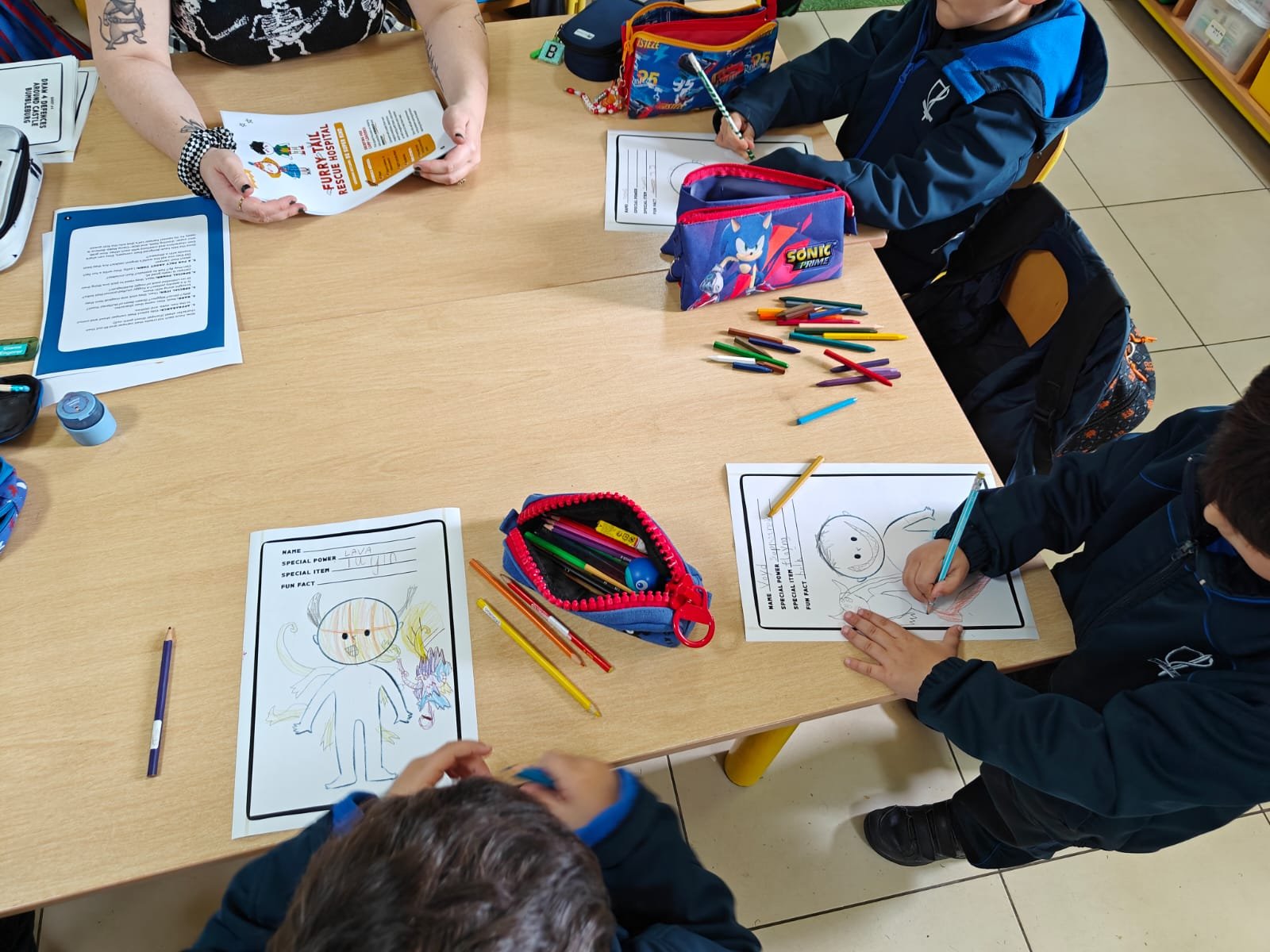#2 Frances & Ġorġ: A guide to playtesting TTRPGs with kids
If you haven’t read our first blog post in this series, check it out here to learn a bit about how we designed the first draft of our game Frances & Ġorġ: Camp Make Believe — a collaboration with Frances & Ġorġ by Studio Meltdown.
The next step was to playtest our first draft — a daunting prospect with any TTRPG you create, but even more intimidating when you’re not sure how children will respond. And if kids aren’t engaged or are bored, it’s painfully obvious!
So, why playtest?
Playtesting helps us figure out:
Whether the mechanics work
Whether the game is easy to learn and follow
Whether the game is fun
Whether the pacing and timing are appropriate
Where there might be holes or confusing points in the rules
How players collaborate and interact with each other during the game
What to improve in future drafts
Our playtesting process
Earlier this year, we took our first draft to children’s groups made up of friends’ kids and Malta’s primary schools. We wanted to see how it performed under real conditions — especially in classrooms — since our goal is for this game to be used in extracurricular activities in schools, or even within the curriculum, alongside parents’ playing these games at home with their children.
We made sure each quest had a clear learning outcome, adding educational value alongside pure fun.
Setup
Participants: Groups of 5–7 year olds (though we had some as young as 4)
Where: Primary schools in Malta and friends’ houses
Session length: 45-minute sessions, with us acting as GMs alongside the children
Max number per group: 4 kids
What we tested
Mechanics & Difficulty
We wanted to see if kids engaged with the dice-and-decision mechanics, their character sheets, and related drawing activities. Did they find anything confusing or frustrating?
Engagement & Pacing
We kept a close eye on their focus and whether we kept them engaged from start to finish. We also wanted to know if we could complete a quest — alongside character creation — within a standard class time.
Expression
We hoped to observe how children used their imagination and their character’s ability and item. We also wanted to gauge which stories, quests, and problems excited or fell flat for them. Boys and girls often have different preferences, and we wanted to account for both.






Observations
The mechanics are pretty smooth!
Most children quickly understood dice rolls and their significance — although we sometimes had a hard time prying the dice away afterwards (they kept rolling them just for fun!)
The game’s language is mostly clear, but some quests had too much text for children this age.
Picture prompts and simple explanations work much better.
The game kept their attention!
Overall, children stayed engaged, especially when there was drawing and rolling of dice. They were also enthusiastic to set the scene with us for each quest. Some educators even noticed children come out of their shells — “I’ve never seen that boy speak in class!!”. That comment really solidified why these kind of games are important.
The debrief section was a hit with both educators and parents.
The debrief at the quest’s end — reflecting on what the children learned — was especially helpful. These questions are great for educators of subjects like Personal Social Development (PSD). All the children responded well and engaged in these conversations, but we’ll keep them brief (with a maximum of 3 questions).
Surprises & Learnings
Young boys in Malta are very into Sonic the Hedgehog, Football, and John Cena.
I’ll start with a bit of a joke. I did NOT expect to have a whole group of 4 characters all called John Cena.
We learned we need to be more flexible with expression.
Not all children enjoy or are able to draw or write, and that's fine. Providing alternative ways — like speaking or colouring — lets everyone join in their own way, and lets younger children or children with different abilities fully appreciate the game.
Some parents and educators suggested adding physical activity to quests.
This is something we hadn’t included previously, but we’re excited to bring it into future quests! Our Superhero Academy quest, for instance, could include a physical activity or challenge alongside the roleplay.
Next steps
We’re rewriting our draft with these learnings in mind. Our main goals are:
Less writing — with more opportunities for colouring, drawing, or acting instead
Clear “set the scene” elements to aid imagination at the start of each quest
A dice roll for each quest to aid fairness and randomness
Some physical activity incorporated to keep children engaged and moving
Short quests — 20–30-minute sessions — so children, parents, and educators can wrap them up in a single sitting.
This way, the game feels less intimidating, more flexible, and much more fun.
Coming soon…
We’re preparing a revised version for additional home and summer school playtesting in June/July.
These playtests were really promising — they helped us identify what’s already strong and what we need to improve to make this a game that’s easy for children (and parents/educators) to enjoy. We’re excited to bring Frances & Ġorġ: Camp Make Believe to you later this year through BackerKit. Stay tuned for more!
Read Blog #1: A Guide to Designing TTRPGs for Kids
Read Blog #3: How to Play Camp Make-Believe
This project is supported by Arts Council Malta.







